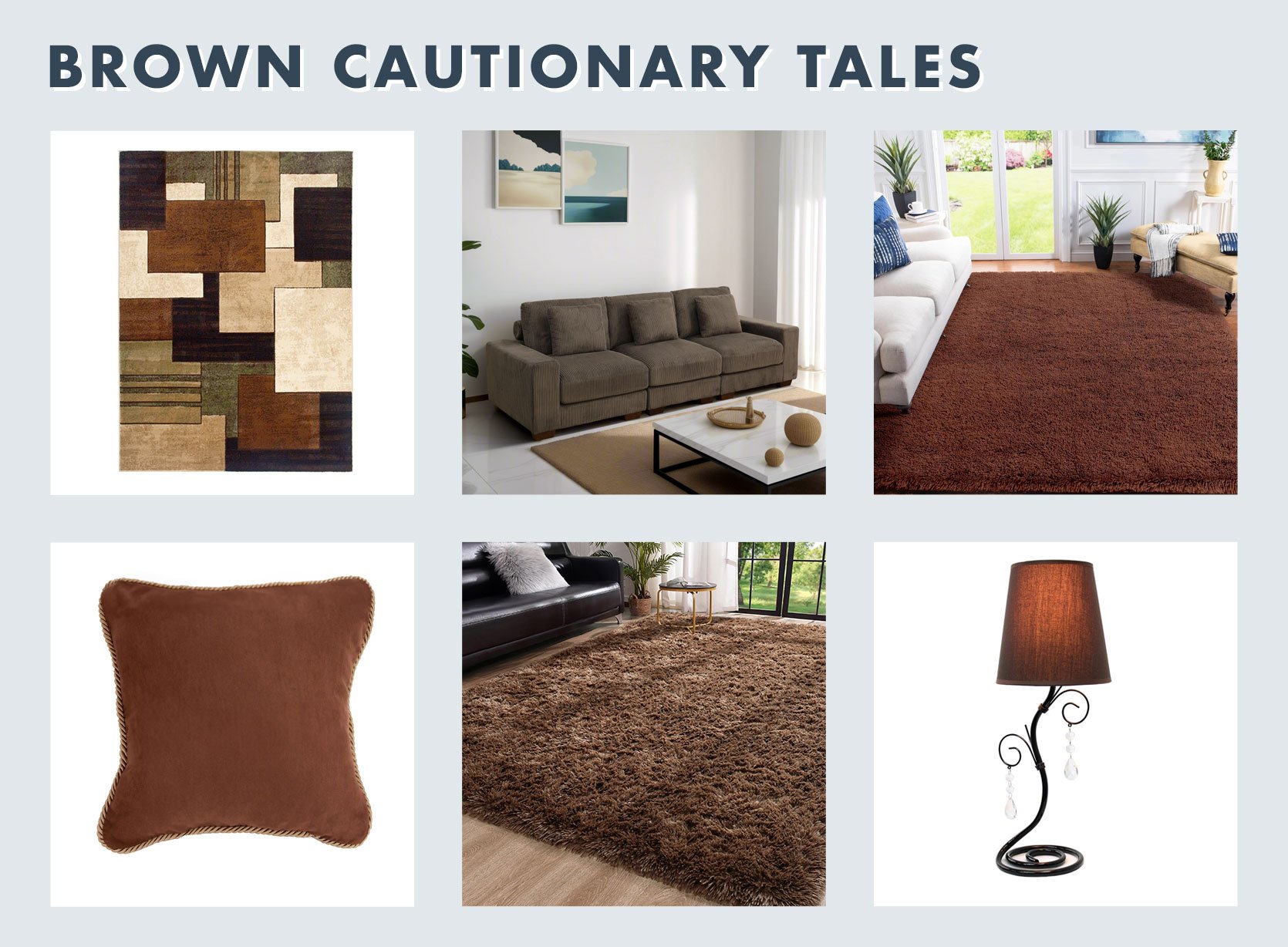“Brown is making a comeback.” The year was 2015, and the collective design “we” was at the height of our blonde wood Scandi obsession. That surprising quote that stuck with me for the last nine years was uttered by a woman named Toma Clark Haines, a whip-smart, savvy entrepreneur I got connected with for a story back in my magazine days. I was to travel with her around parts of England, Amsterdam, Belgium, and France for a feature story on buying antiques abroad. She runs an antique tourism company called The Antiques Diva, and trust me when I tell you that she knows her stuff.
We were standing in the basement (truly, an understatement for the vastness of the space because it went on and on and on, twisted and turned) of a castle in Belgium that was both a person’s residence and also their showroom of sorts for their antique dealership. The majority of the pieces, all with pedigrees as old as 300-400 years old, were mid- to dark-toned brown wood. Some wore chipping paint in creams and blues and grays, but brown reigned supreme. I recall thinking they were beautiful but “not my style.” By the time I left that week-long trip, my thoughts on brown wood and antiques in general would be forever changed.
Brown was a far cry from what I was seeing on the floor of retailers back home in the States, but by this point, I also knew that design cycles start far earlier than we think they do, often at the top end of the market that eventually, even a decade later, trickle down to the mainstream.
I nodded and thought “Imagine if she’s right.” I had spent the better part of the previous five years painting all my brown wood furniture in varying shades of milky farmhouse colors like chalky Swedish blue and Robin’s egg green (I’m so sorry). My heart still hurts for the beautiful acorn veneer mid-century modern chest I bought at an antique mall in Boca Raton, Florida, that I promptly spray-painted a shade of cobalt blue. When I posted the final result on Instagram, it was met with a chorus of approval. Sure, it was striking and fun, but in retrospect, I 100% ruined it. Forgive me, friends, for I didn’t know any better.
And yet here I am, nearing the year 2025, and I can confidently say that brown is indeed back. What once was a bad word in many design circles is now the very subject of this post. I’d say it’s funny how that happens but it’s really just how trends work. My social feeds are replete with Reels of painted furniture being stripped back with captions like “You’ll never guess what was hiding under here!” in the same way we were all enchanted by the prospects of hardwood masked by wall-to-wall carpeting. “Can you imagine there’s actual WOOD under all this paint?!? Wow!”
Our acceptance of brown back into our lives didn’t just start though. It crept in slowly through neutrals like flax, oatmeal, and cream. Beige, which so many of us swore off after the height of “Tuscan” tastes, was finding its place back in our homes where white used to be. It was warmer, less jarring, sunkissed. It said “Nancy Meyers” rather than “art gallery” and after years stuck in our homes during the pandemic, I think we all welcomed back the warm hug that is an eggshell and ivory paint. We started calling it “mushroom” and leaned into taupe.
These colors drew us into our social feeds, calling our thumbs like sirens to bookmark and save the work of Amber Interiors and Jake Arnold, two designers that do warm neutrals (and yes, brown) so dang well you don’t even realize you’re crushing on brown and beige before you are. Drew Michael Scott of Lonefox made us all pause and go “Huh….” when he picked a rich chocolate brown color for the cabinets in his coffee bar…and then proceeded to slather much of his home in the earthy shade as we looked on.
Like John Green famously wrote in The Fault In Our Stars (though I think it’s riffed off Hemingway) “I fell in love the way you fall asleep: slowly, and then all at once,” that’s a very romantic way to describe how I think brown landed in our homes again. We watched others with a more skilled hand try it out first; painting walls, bringing in brown velvet sofas, going for the darker wood tones rather than the light. There were a few “If they like it for their own homes, good for them, but it’s not for me,” until we feel ourselves soften. We find ourselves pinning the brown linen bed, the glossy truffle-toned side table, the nubby coffee-colored throw. Slowly, and then all at once.
While I can wax poetic about how brown got a seat at the design table again, there are some nuts and bolts to discuss, as well. Because my friends, all browns are not created equal, and ultimately, that’s what we’re here to discuss today.
How To Pick The Right Tone Of Brown
I read Chris Loves Julia say the following sentiment that I totally agree with: “Brown brings in a depth that black can’t and a warmth that gray can’t. It feels romantic and intimate.” Black is edgy and interesting and grounding, but brown is deep, evocative, and warm. These hues do totally different things, and they both belong in the design of our homes. But like I said, brown, unlike black, has so much variety and it’s not all great. You want to go for browns with red, almost mahogany undertones rather than yellow or orange. Even a brown with some green behind it can feel fresh and modern. Let’s look at some examples.

There are two things happening in all of the products above: The browns are flat, one-note, and nearly orange (and yes, I did just write a post about how orange is great but this does not apply). The materials feel unnatural, like acrylic and bad corduroy. Brown works best in textures and natural materials such as linen, wool, and wood. Velvet is also great because it gives it so much dimension, which is needed for such a dark shade. You want the brown to say “mocha” and “ganache” and “chocolate.” Think about the difference between a chocolate croissant from a French bakery vs. a jumbo pack of 12 from Costco (also, I love Costco, so no hate here, just trying to paint a picture). It should feel luxe and rich, even if it’s a $20 pillow from Target.

Top row: Landon Hand Knotted Rug | Reclaimed Wood Decorative Pedestal | Handmade Moroccan Zellige 4×4 Chocolate Brown Terracotta Tile | Bottom row: Portola Pleated Sofa in Mahogany Classic Velvet | Paola & Joy Evie Sculpted Table Lamp (E27) – Walnut | Mishka Wood Side Table
All the browns above, while still rich and dark and warm, are soft. Natural, some even neutral. They have variety via wood grain and color dappling and the nap of velvet. The silhouettes of the products feel timeless and storied. THIS is what you’re going for.
The Best Brown Paint Colors
You know a color is really and truly in the zeitgeist of design when you start seeing it on walls. It’s easy to bring in a pillow and a vase, but when it’s on all your surfaces, that’s truly a commitment. Brown, like most other deep and moody shades, works well with the color-drenching technique, but in my opinion, it’s crucial that the room you use it in gets beautiful light.
I scoured beautiful homes and some of my favorite images, put on my sleuth hat and found out some of the best brown paint colors used by designers and those with great design eyes (for instance, that gorgeous brown in the hero image is the primary bedroom in the home of Chris Loves Julia, where they used Farrow & Ball’s London Clay). All of these browns are warm, interesting and vary in undertones between red, black, and green. If a lot of your furniture is a lighter wood tone or a wood tone that leans yellow, you’ll want a black or green-toned brown. If you have dark ebony, red-toned or neutral-toned woods (like walnut) a brown with mahogany undertones is your best bet. But again, ALWAYS test a paint color, especially something like this, in your specific room so you can see how the light interacts with it. It could change a neutral brown into a greenish-brown, for instance, depending on what’s outside your window.

1. Mocha Brown by Benjamin Moore | 2. Midsummer Night by Benjamin Moore | 3. Salon Drab by Farrow & Ball | 4. Dark Clove by Sherwin-Williams | 5. Whitney Portal by Portola Paints | 6. Sable by Sherwin-Williams | 7. Tarpley Brown by Benjamin Moore | 8. Rue Bourbon by Valspar | 9. Coffee Date by Clare | 10. French Press by Benjamin Moore | 11. London Clay by Farrow & Ball | 12. Dark Truffle by Behr
What Colors Should You Pair With Brown?
Whether you’re sprinkling brown around your home or pulling out your paintbrush, you may still need some guidance on what to pair it with. Since brown is a “neutral” color, it goes with basically everything (yes, even black), but I cooked up some ideas for you below:
Warm Neutrals
This is the most obvious place to start. As I mentioned earlier, we’ve been in solid “beige” territory for the last year or two, which opened the runway for full-on brown. This is the space that Amber Lewis lives in mostly (see below), and while it’s a bit too muted for my tastes, it can be really nice, calm, warm and inviting. The key is to use varying tones of cream, beige, brown, and even warm grays (this includes your wood tones, as well). You don’t want to introduce too much contrast, so keep the hues in a tight spectrum.
If you prefer something a bit brighter and happier, you can widen the spectrum with some truer whites and maybe even some black, as well.

Cool Neutrals
I know that warm tones just aren’t for everyone. You can still go brown in a cooler palette, though! I love the primary bedroom in the home of Chris Loves Julia (below) because it’s “brown” but doesn’t feel earthy. They achieved this by keeping some of the soft goods in the realm of grays, taupes, and steely blue.

Earth Tones
Cool tones not your thing but warm neutrals a little too simple? Try some earth tones instead! Brown is crucial to an earth tones palette because uh, it’s one of the most “natural” colors (what does that even mean? ha). I love seeing it used with reddish terra cottas, muted mossy greens, and even a dash of cornflower blue. Both of the below images have lighter ivory wall colors, which I think really helps to keep this palette from feeling too 1970s basement.

Bright & Bold Colors
Because there isn’t an Arlyn post without some color, I had to bring this palette in, too. Brown is a wonderful color to root some bold choices like yellow, emerald green, even fuchsia, plum, and lavender. Use it in place of grey or black for something that feels less severe and easier on the eyes.

Aaaand that’s it, my friends. We’ve talked bad browns, good browns, paint colors, color palettes, and even got a little fancy and romantic with some brown storytelling. WHAT A JOURNEY! I know brown isn’t for everyone, some of us are still scared and scarred from earlier in this century (and even further back to the ’70s and ’80s…woof!), but I hope you can see that brown can really be used in modern, fresh and beautiful ways.
So, thoughts?
Until next time…
Opening Image Credits: Design & Photo by Chris Loves Julia
THIS POST WAS ORIGINALLY PUBLISHED HERE.


